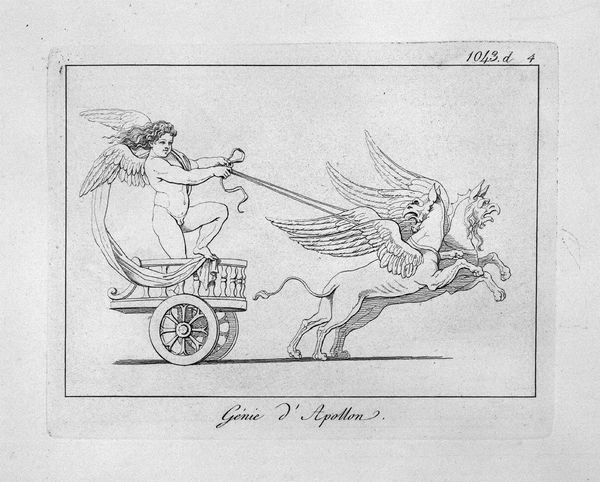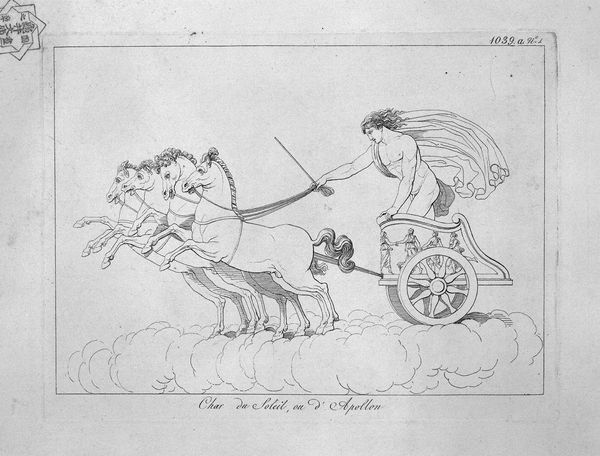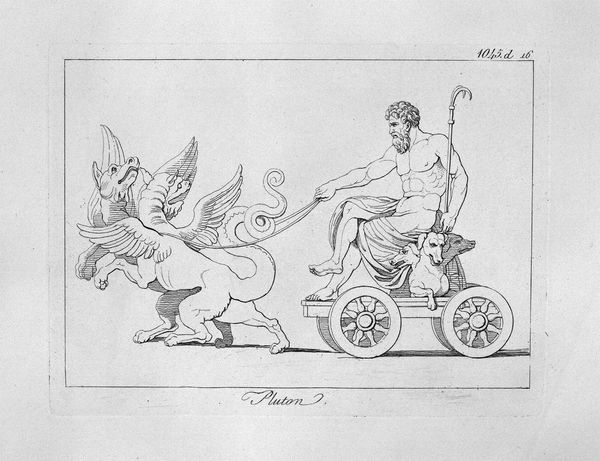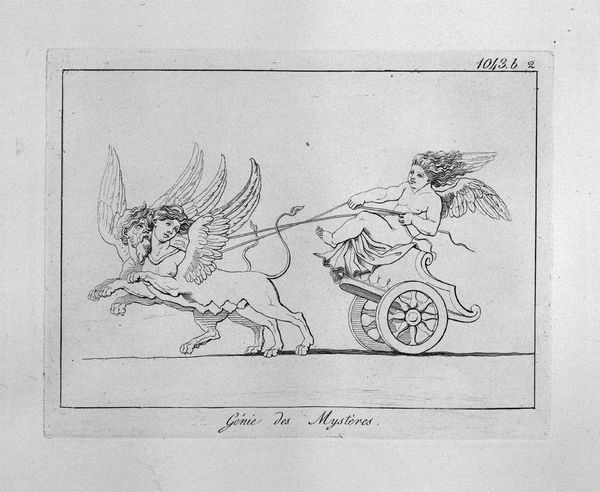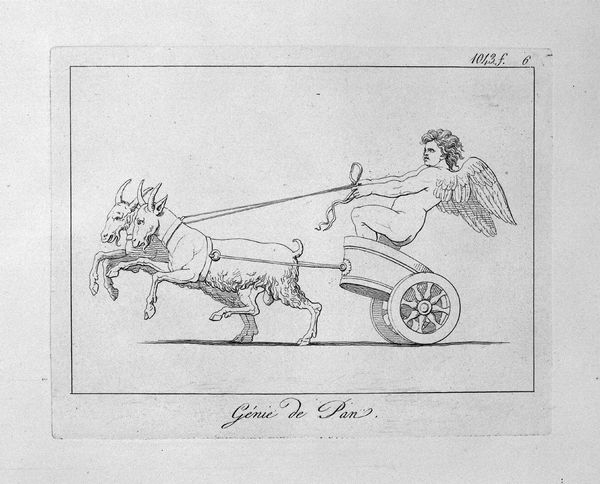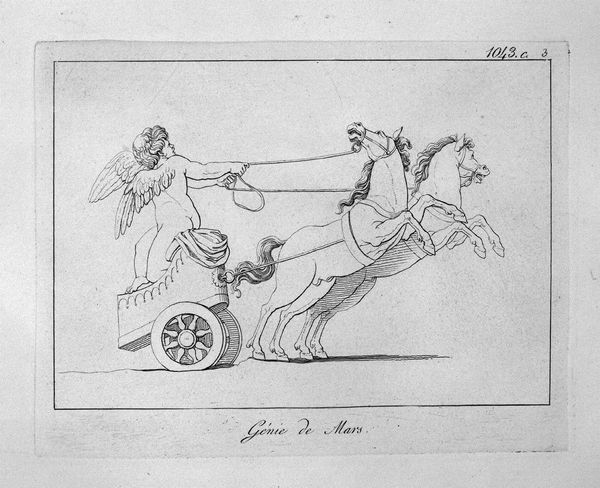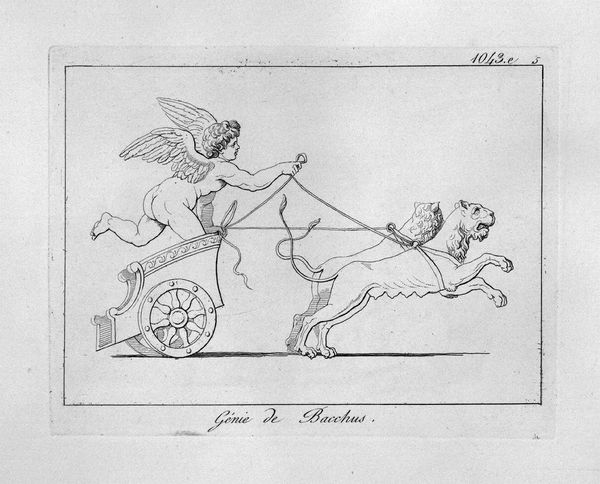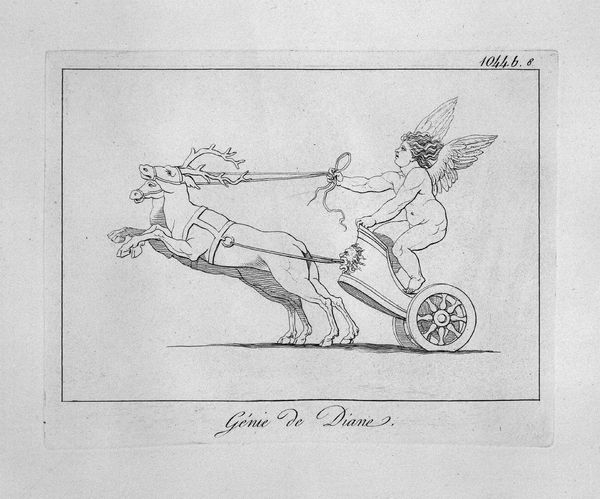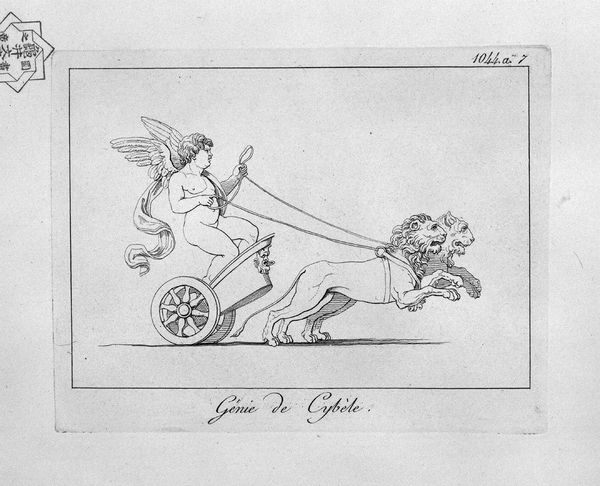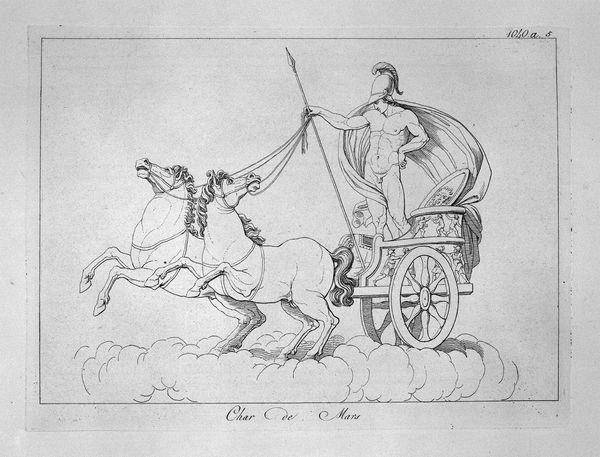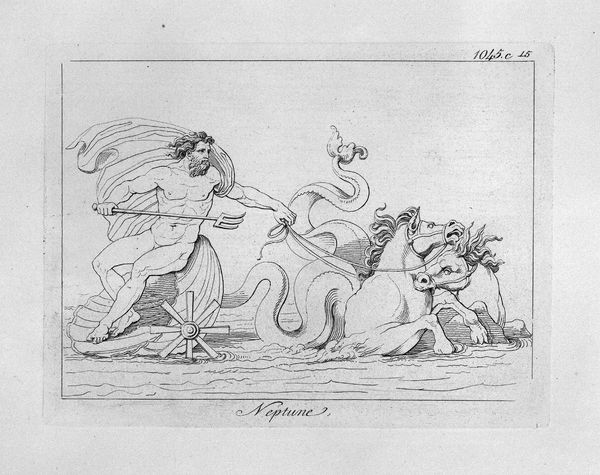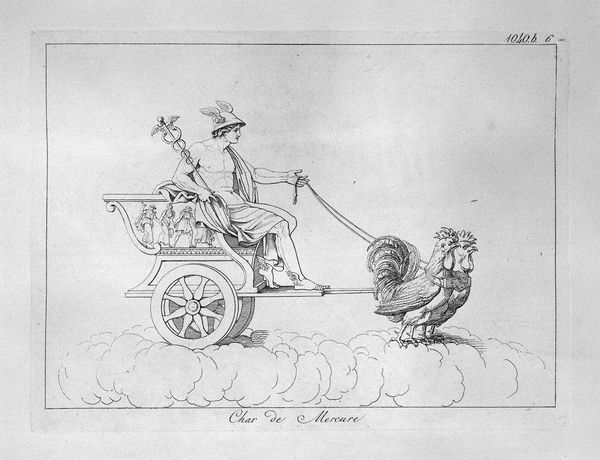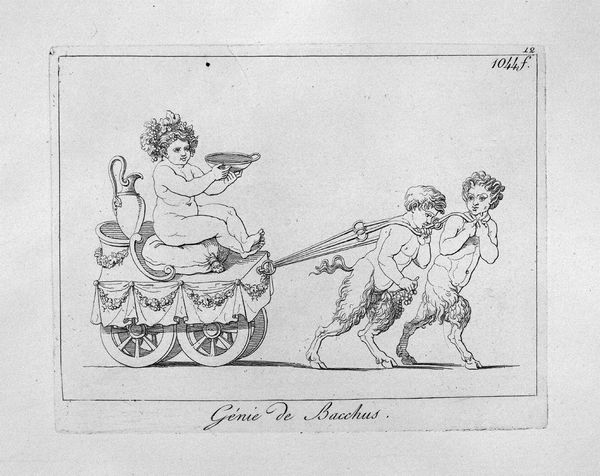
etching, engraving
#
portrait
#
allegory
#
etching
#
greek-and-roman-art
#
figuration
#
roman-mythology
#
mythology
#
line
#
nude
#
engraving
Copyright: Public domain
Editor: Here we have Giovanni Battista Piranesi's etching "Venus". The composition really strikes me, with Venus so serene in her chariot, pulled by cherubs with flaming torches. What do you see when you look at this piece? Curator: The first element that commands attention is the primacy of line. Observe how Piranesi uses varying thicknesses and densities of lines not to replicate tone, but rather to suggest form and volume. Editor: So it's more about the suggestion of light and shadow rather than a realistic depiction? Curator: Precisely. Note also the spatial relationships—how Venus, though centrally positioned, appears almost flattened against the plane due to the etching technique. The angels create depth, but not convincingly. It calls attention to the artifice, to the constructed nature of the image itself, rather than striving for illusionism. Do you perceive the interplay between classical subject matter and this somewhat modern treatment? Editor: I do see that tension now. The subject is very classical, almost a cliché, but the execution feels fresh. Are those very fine, deliberate lines almost like a rejection of classical sculpture? Curator: It’s as if Piranesi is engaging in a visual dialogue, perhaps critiquing and reinventing the visual vocabulary of classicism. It presents not a seamless homage, but a sophisticated re-evaluation through form. Editor: That's a different way of seeing this image that I hadn't considered. Thank you. Curator: My pleasure. Hopefully now you see how the image’s visual components contribute meaning, independent of subject.
Comments
No comments
Be the first to comment and join the conversation on the ultimate creative platform.
